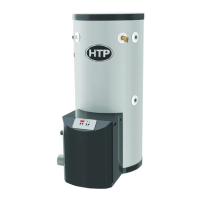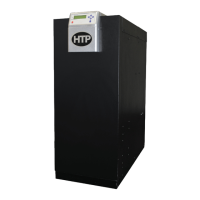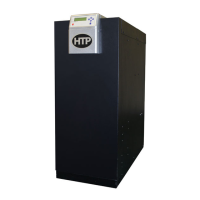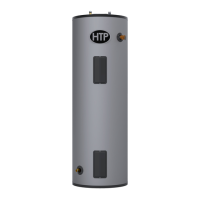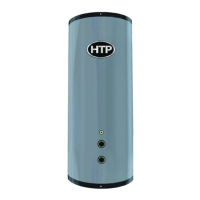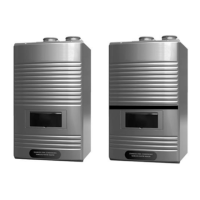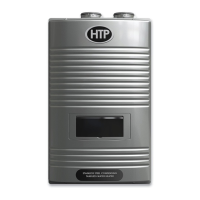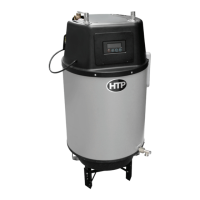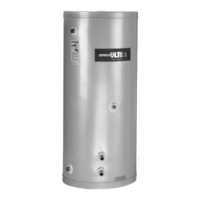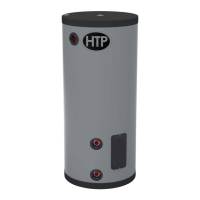LP-179 Rev. 6.7.16
20
Part 5 - Venting and Condensate Removal
The heater must be vented as detailed in this section.
Ensure exhaust vent and intake piping complies with these
instructions regarding vent system. Inspect nished exhaust
vent and intake piping thoroughly to ensure all joints are
well secured, airtight, and comply with all applicable code
requirements, as well as the instructions provided in this
manual. Failure to properly install the vent system will result
in severe personal injury or death.
A. General
This heater is certied as a “Category IV” appliance and
requires a special venting system. The vent system will
operate with a positive pressure in the pipe. Exhaust gases
must be piped directly outdoors using the vent materials
and rules outlined in these instructions. Do not connect vent
connectors serving appliances vented by natural draft into
any portion of mechanical draft systems operating under
positive pressure. Follow the venting instructions carefully.
Failure to do so will result in substantial property damage,
severe personal injury, or death.
1. Installation should be made in accordance with the
regulations of the Authority Having Jurisdiction, local code
authorities, and utility companies which pertain to this type
of water heating equipment.
2. Install the venting system in accordance with these
instructions and with the National Fuel Gas Code, ANSI Z223.1/
NFPA 54, CAN/CGA B149, and / or applicable provisions of
local building codes.
3. This water heater must be vented with materials,
components, and systems listed and approved for Category
IV appliances.
Exhaust and intake are to be piped separately. This heater
cannot share a common exhaust or intake with multiple
appliances. Failure to follow these instructions will result
in substantial property damage, severe personal injury, or
death.
NOTE: To avoid contamination often contained in indoor
air, it is best to pipe all intake combustion air directly to the
outdoors.
NOTE: If exhaust vent pipe system passes through an
unheated space such as an alcove or attic, the space must be
heated.
Improper seating of vent pipe gaskets can cause eventual
gasket failure and exhaust gas leakage. Ensure the exhaust
vent pipe is properly beveled and seated before insertion
into the ue adapter. Failure to do so could result in property
damage, severe personal injury, or death.
Due to the extreme ammability of most glues, cements,
solvents, and primers used to join plastic exhaust vent and
intake pipes, explosive solvent vapors must be cleared from
all vent piping before start-up. Avoid using excess cement or
primer, as this may pool in the vent pipes. Vent assemblies
should be allowed to cure for a period of at least 8 hours
before powering a connected appliance. Failure to follow these
instructions will result in substantial property damage, severe
personal injury, or death. It is the installers’ responsibility to
understand the hazards associated with explosive solvents and
take the necessary precautions to avoid these risks.
CPVC, Polypropylene, or Stainless Steel pipe material MUST be
used for the rst 3 feet of the vent run if the exhaust vent passes
through an enclosed space greater than 6”, such as a wall. The
balance of the vent run can be installed with standard Schedule
40 PVC pipe. Failure to comply with this warning could result in
property damage, severe personal injury, or death.
Exhaust vent adaptors are not designed as load-bearing
devices, and must not be used to support exhaust vent piping.
All vent pipes must be properly connected, supported, and
the exhaust vent must be pitched a minimum of 1/4” per foot
back to the heater to allow drainage of condensate. Failure to
properly support vent piping and follow the information in this
statement could result in product damage, severe personal
injury, or death.
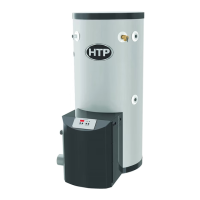
